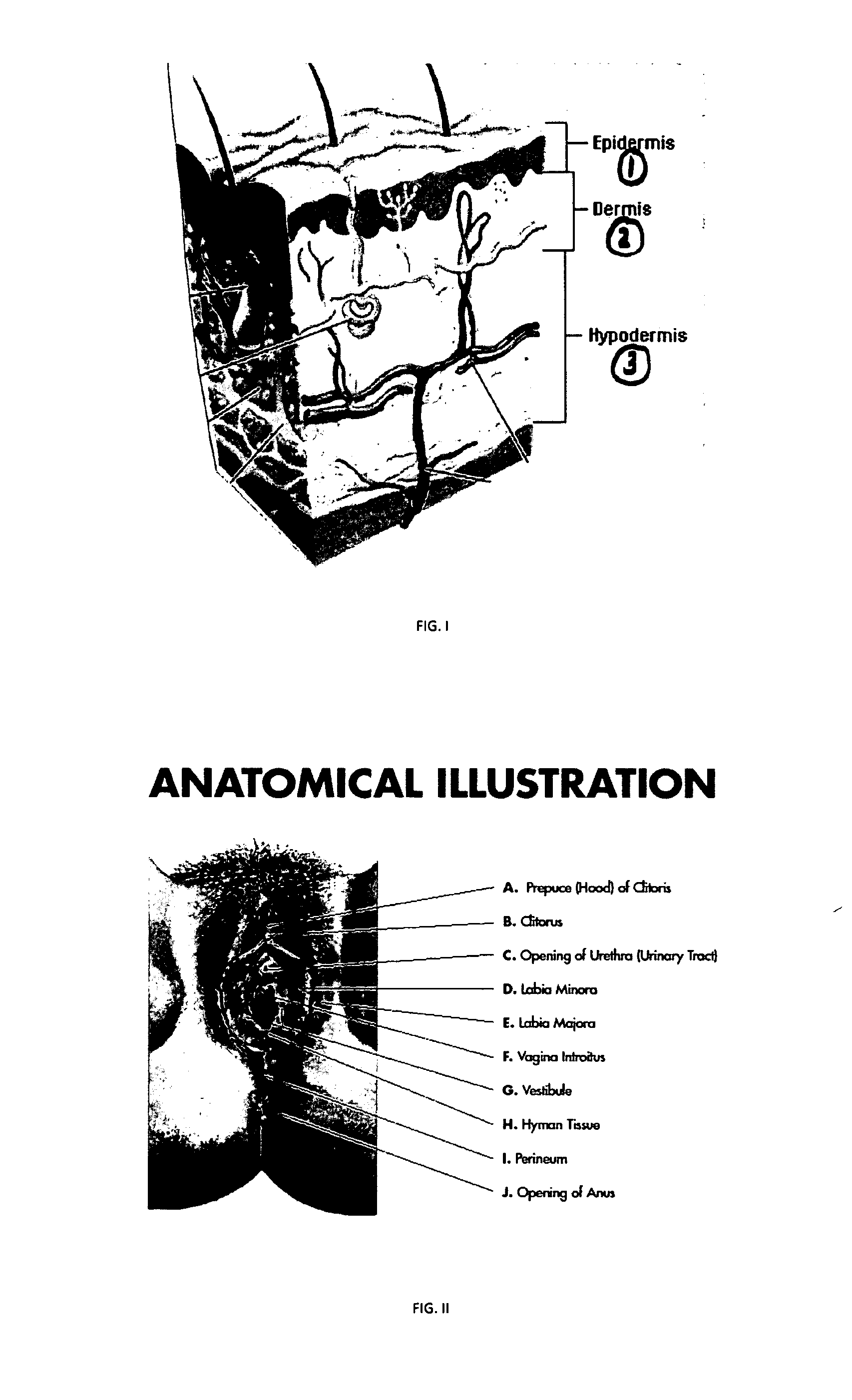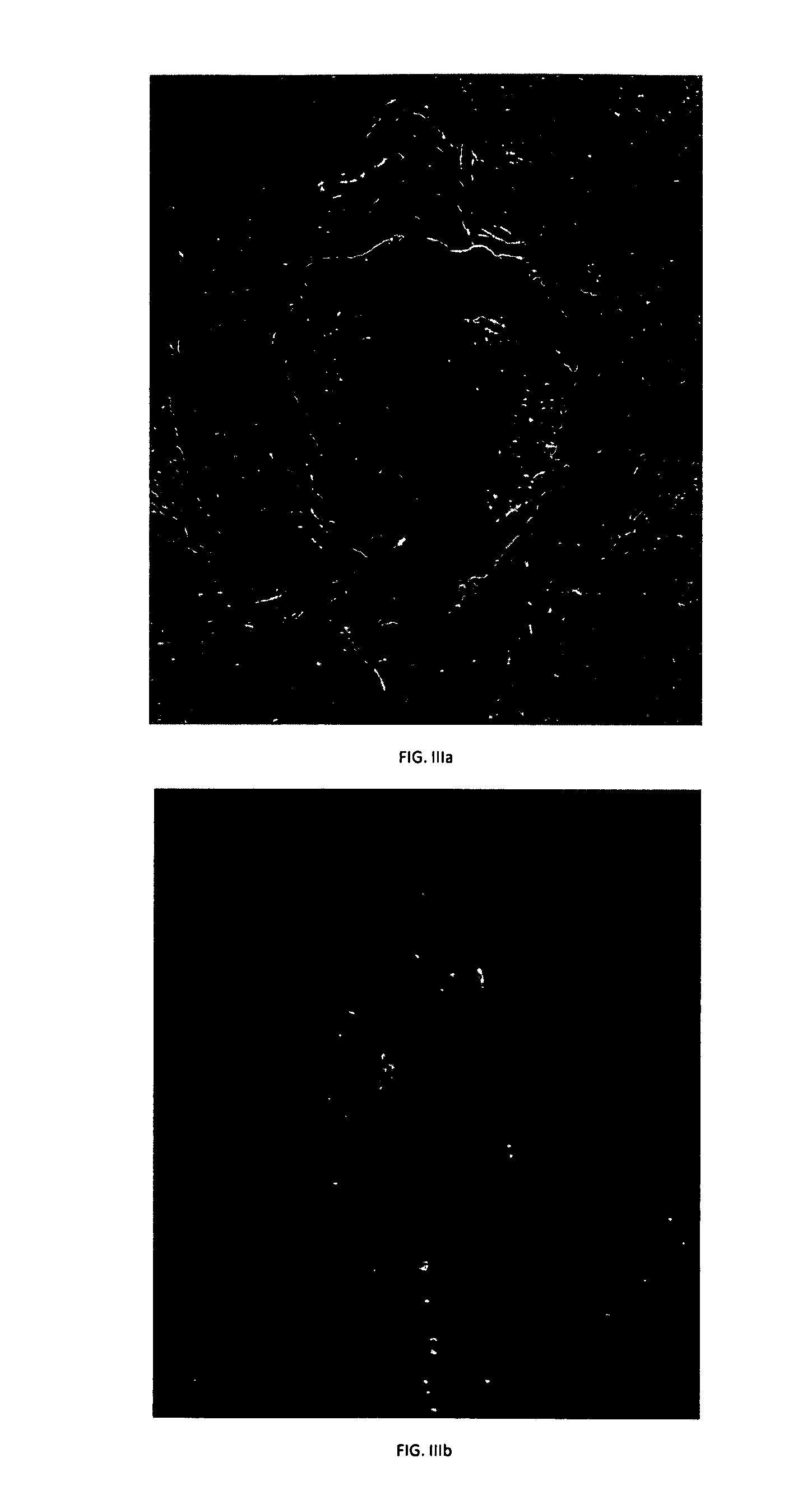Method for correction of female urinary incontinence and skin reduction
a technology for urinary incontinence and skin reduction, which is applied in the field of skin reduction and skin correction of female urinary incontinence, can solve the problems of urine leakage, weakening the pelvic floor muscles, and weakening the vagina and the ligaments that support the bladder, and achieves the effects of reducing skin, tightening skin, and effectively causing skin contraction
- Summary
- Abstract
- Description
- Claims
- Application Information
AI Technical Summary
Benefits of technology
Problems solved by technology
Method used
Image
Examples
Embodiment Construction
[0058]The description of this new, novel method is as follows:
[0059]Infrared light is used to heat the dermal layer of the skin (see FIG. I-2). Sustained heating of the dermal layer of the skin over several seconds contracts the collagen and elastin components of the dermis resulting in tightening of skin, reduction of skin, and improved skin tone. (see FIG. IIIa, FIG. IIIb, FIG. IVa, FIG. IVb, FIG. Va, FIG. Vb)
[0060]The procedure is performed with application of the light device to seven treatment area (FIG. II-A, FIG. II-C, FIG. II-D, FIG. II-E, FIG. II-F, FIG. II-I, FIG. II-J). The description of the procedure application to each of these seven treatment areas is as follows:
[0061]Application of the light device to the treatment area labeled in FIG. II-E is as follows. The light device is applied to the treatment area just after a layer of cooled ultrasound gel is generously applied to the skin being treated. When the treatment window through which the infrared light is emitted is...
PUM
 Login to View More
Login to View More Abstract
Description
Claims
Application Information
 Login to View More
Login to View More - R&D
- Intellectual Property
- Life Sciences
- Materials
- Tech Scout
- Unparalleled Data Quality
- Higher Quality Content
- 60% Fewer Hallucinations
Browse by: Latest US Patents, China's latest patents, Technical Efficacy Thesaurus, Application Domain, Technology Topic, Popular Technical Reports.
© 2025 PatSnap. All rights reserved.Legal|Privacy policy|Modern Slavery Act Transparency Statement|Sitemap|About US| Contact US: help@patsnap.com



